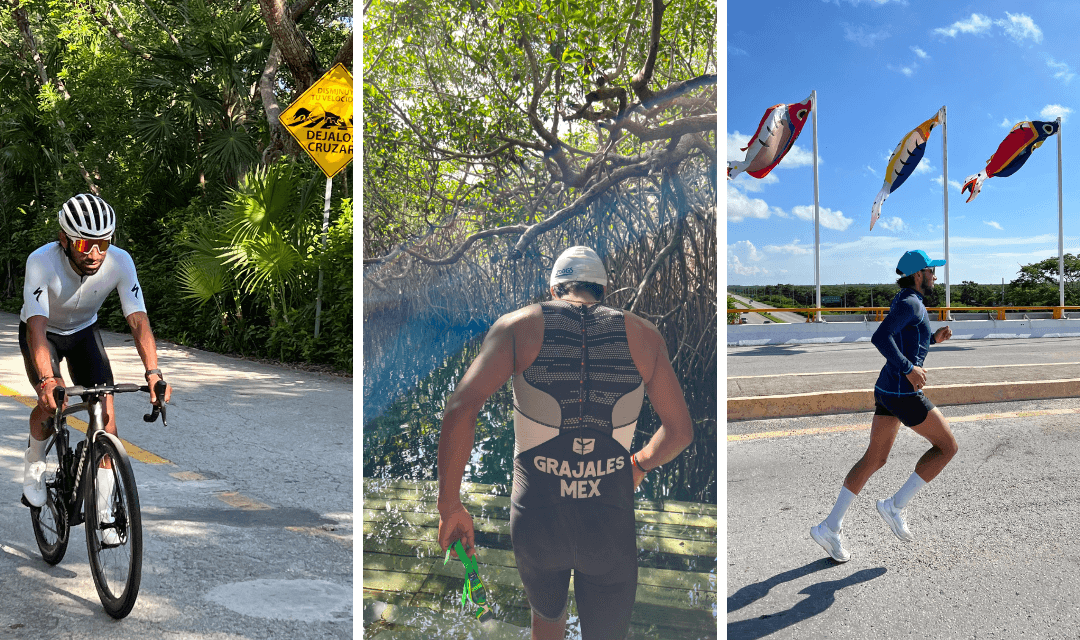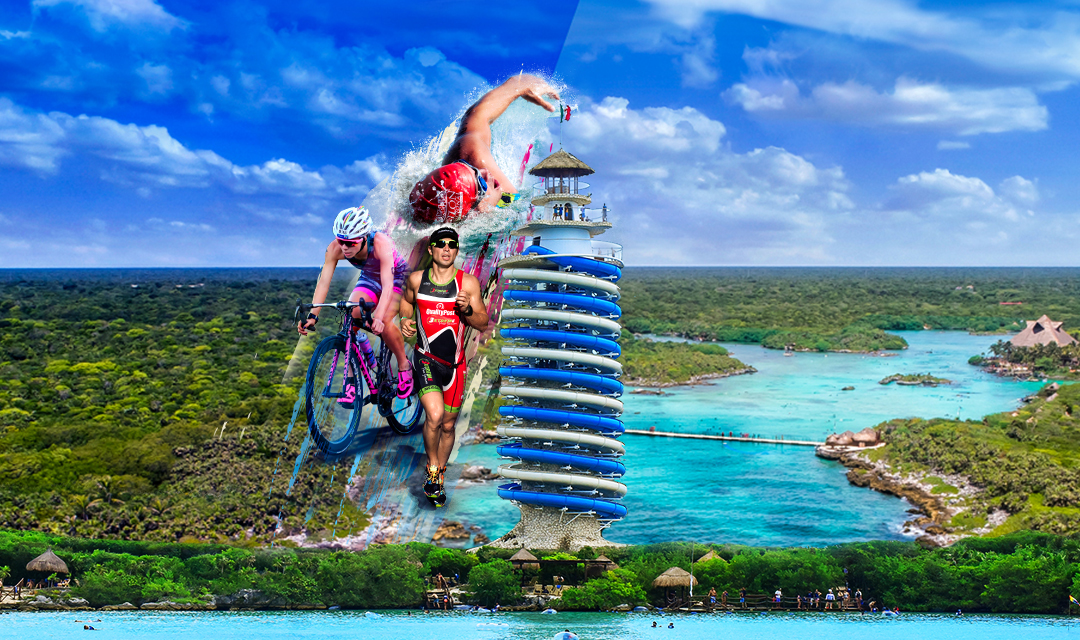Everything you need to know about a triathlon
November 09, 2023
The best tips if you want to participate in a triathlon!
Raise your hand if you consider yourself a fit person. Anyone?
If you are part of this group, then this will interest you; if not, reading this is a great way to get into or learn something new today.
One of the most complete competitions that people passionate about sports can experience is doing a triathlon. Let me explain why!
What is a triathlon?
A triathlon is a sporting competition involving three disciplines performed sequentially: swimming, cycling, and running. Participants, known as triathletes, must complete each of these disciplines in order, without interruption, and in the shortest possible time.
The distances in each discipline can vary, but there are standard distances:
Swimming: It usually takes place in open water, such as a lake or the sea, and can vary from 2461 ft. to 2.36 mi. or more, depending on the distance of the competition.
Cycling: After the swim, participants move to the transition area, change their gear, and get on the bike. The cycling distance varies, usually 12 to 112 mi. in standard-distance triathlons.
Run: Participants leave their bikes and run on foot. The distance is usually 3 to 27 mi. , depending on the length of the triathlon.
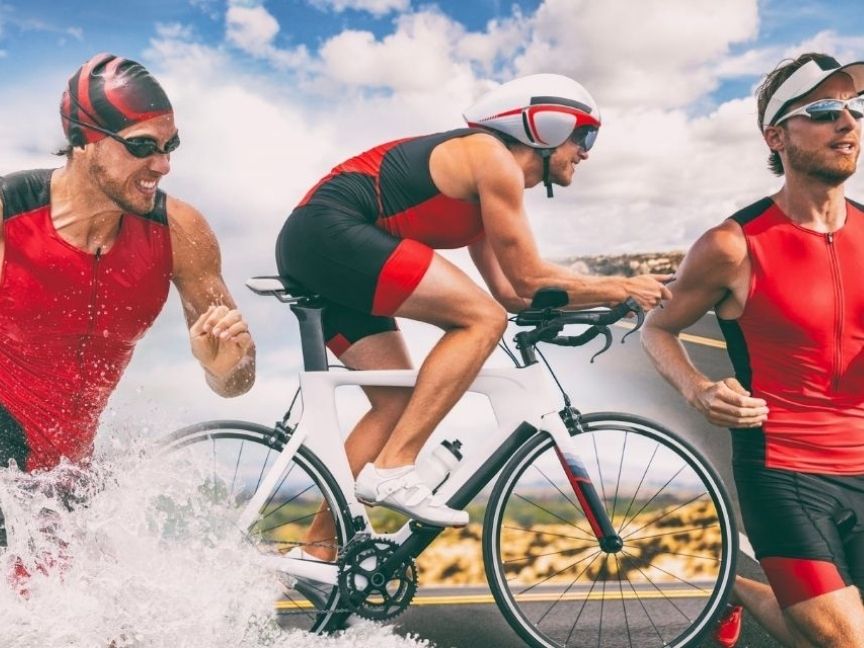
What types of triathlons are there?
There are several types of triathlons, some of which allow team racing.
Standard: Also known as an Olympic triathlon, it consists of a 1.2-mile swim, 25-mile bike, and 6.2-mile run.
Sprint: It is a shorter version of the standard triathlon, with distances of 1 mile swimming, 12.42 miles cycling, and 3 miles running.
Half Ironman: This triathlon includes 1.8 miles of swimming, 56 miles of cycling, and 13 miles of running.
Long distance (Ironman): Known for being one of the most challenging events, it includes 2.36 miles of swimming, 112 miles of cycling, and 26.7 miles of running.
Ultra distance: Although not as common, some ultra-distance events may have much longer swimming, biking, and running distances than an Ironman.
Relay: A team competes with each member taking on a discipline. There may be three members or more, and each completes their part before passing the relay to the next.
Winter: Instead of swimming, ice skating is used; instead of cycling, cross-country skiing is used; and instead of running, snow running is used.
Cross-distance: This occurs on terrain with natural obstacles, such as mountains, rivers, or rough trails. Distances vary, and it can be either an individual or team event.
It should be noted that the availability of these types of triathlons may vary according to location and sporting event organization. Sometimes, team triathlons allow participants to specialize in one discipline and take turns completing the race.
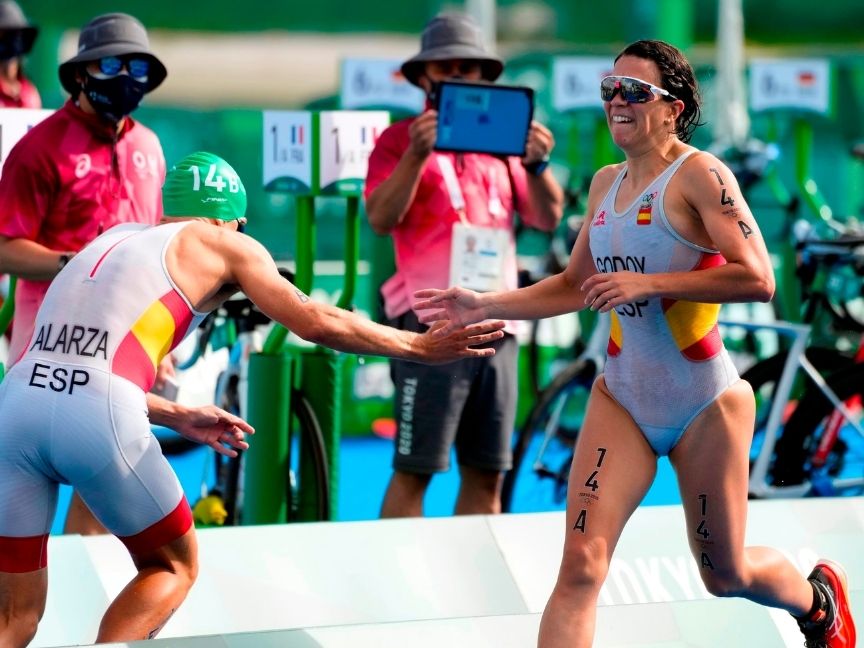
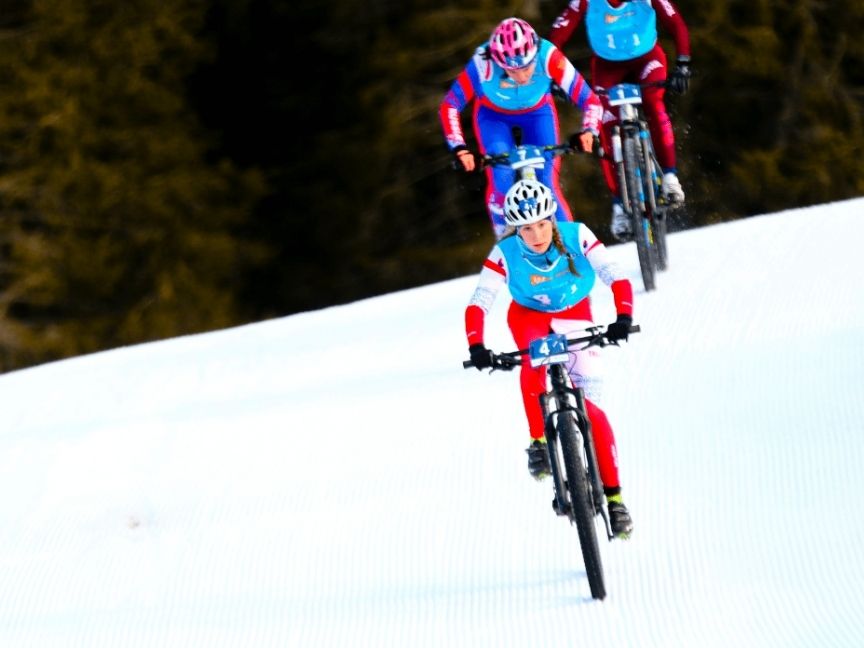
Where do triathlons take place?
Triathlons are held in various locations, from urban cities to natural settings. The location choice depends on the triathlon type and the event organizer. Here are some of the common locations where triathlons are held:
Cities and urban areas: Many sprints and Olympic triathlons are held in urban or suburban areas. Swimming may occur in public pools or nearby bodies of water, such as rivers or lakes. The cycling and running stages often occur on local roads, parks, and urban areas.
Open water: Some triathlons, particularly Ironman distance triathlons, are held in open bodies of water, such as oceans, seas, and large lakes. Athletes swim in open water, which can add challenges due to changing water conditions.
Natural settings: Sprint, Olympic, and cross-distance triathlons often occur in national parks, forests, mountains, or rural areas. These events offer a more scenic and challenging experience, as athletes may face varied and challenging terrain.
Sports facilities: Some smaller triathlons are held at running tracks or sports complexes. This can make transitioning between disciplines easier, as athletes can be in a centralized area.
Virtual triathlons: With the advancement of technology, athletes can compete from their homes using training devices and tracking apps to simulate all three disciplines. These have become more common in situations where in-person competitions are not possible.

When do triathlons take place?
Triathlons are held throughout the year in different parts of the world, but the availability of competitions can vary by location and season. Here are some important points to consider about when triathlons are held:
Triathlon season: In many regions, it is concentrated in the spring, summer, and early fall months, when weather conditions are often more suitable for outdoor swimming, biking, and running. During these months, you are more likely to find a more significant number of competitions.
Winter: They can happen in areas with mild winters, although they may be less familiar. These events are often held in locations where temperatures are not extremely cold and the swimming is done in heated pools.
Virtual: At any time of the year, triathletes can participate by using online platforms and tracking applications, allowing them to compete from their homes or training sites.
Competition calendar: If you are interested in participating in triathlons, it is essential to check the competition calendar in your region or where you plan to compete. The organizers usually publish the events' dates and details in advance, allowing you to plan your participation.
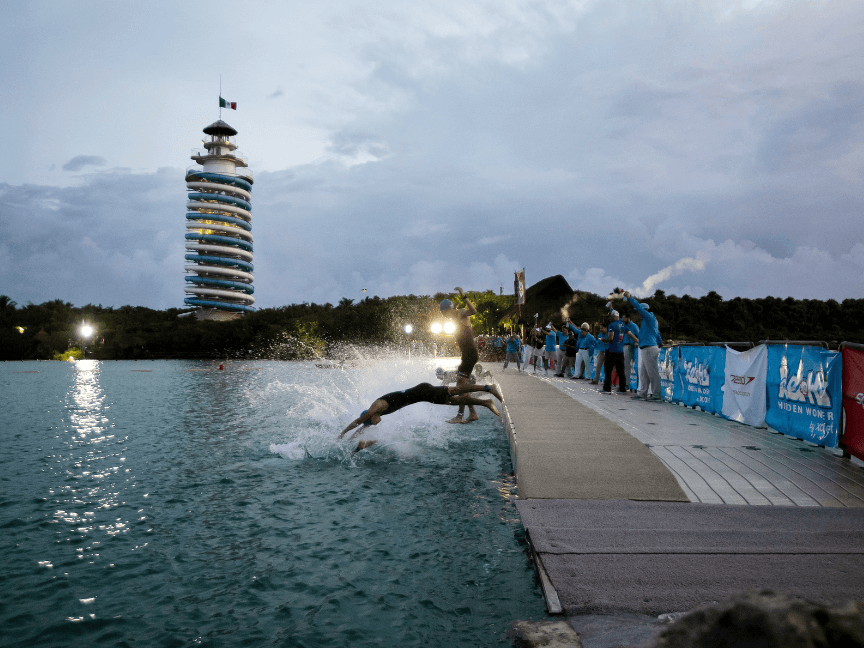
Keep in mind that triathlon competitions can vary in distance and level of difficulty, so you may find events suitable for your level of experience and fitness. Be sure to register early, as many competitions can fill up quickly.
Who can do a triathlon?
As a reminder, it is a sport that is open to people of various ages, fitness levels, and abilities. Virtually anyone can participate in a triathlon, as long as they are willing to train and prepare properly.
Nevertheless, there are some considerations about who can do a triathlon:
Beginners: If you are new to triathlon, you can start with shorter distances, such as a sprint. These distances are more manageable and allow you to become familiar with the transition between disciplines.
Age: This sport appeals to people of all ages, therefore, you’ll find specific age categories in many competitions. This means you can compete with a group of people with a similar fitness level and ability.
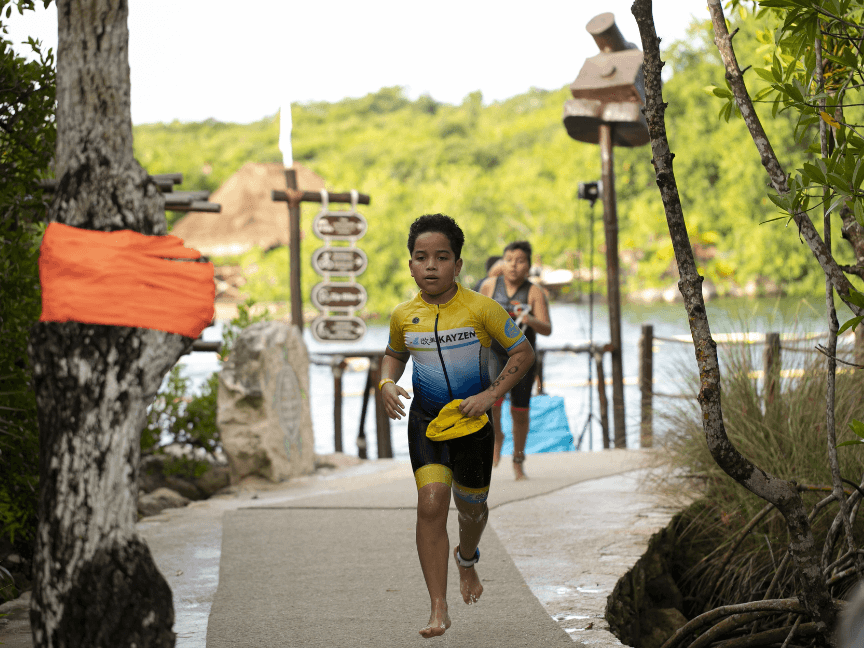
Disabilities: Triathlons are inclusive competitions that can be adapted for people with disabilities. For example, a para-triathlon allows people with physical disabilities to compete on equal terms.
Fitness level: You can start training for a triathlon regardless of your fitness level. Setting realistic goals and gradually improving your swimming, cycling, and running endurance is essential. Many athletes significantly improve as they train for triathlons.
Will and motivation: The most important thing is to prepare for and participate in a triathlon. Dedication and discipline are crucial to success in this sport, as it requires constant training and effort.
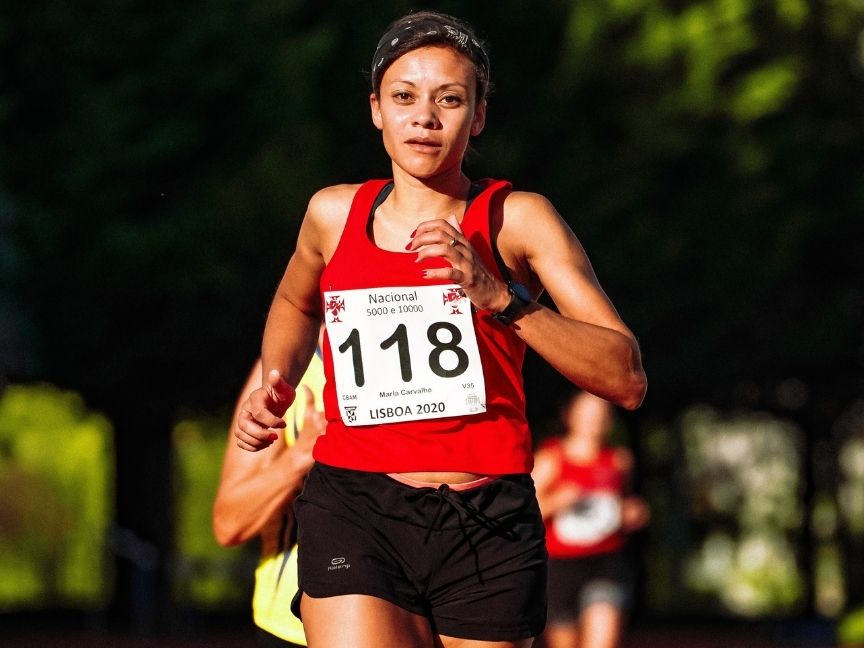
Remember that before participating in a triathlon, it is advisable to undergo a medical check-up and, if you are new to the sport, seek guidance from local coaches or triathlon clubs for advice and specific training.
What equipment do I need for a triathlon?
To participate in a triathlon, you need essential equipment for each discipline.
Swimming
Swimsuit: You can wear a conventional or one-piece swimsuit designed for triathlons.
Swimming goggles: Good ones will help you keep your vision clear underwater.
Earplugs: Optional, but some triathletes use earplugs to keep water out.
Swim cap: In some competitions, you will be provided with a swim cap, but it is advisable to bring your own just in case.
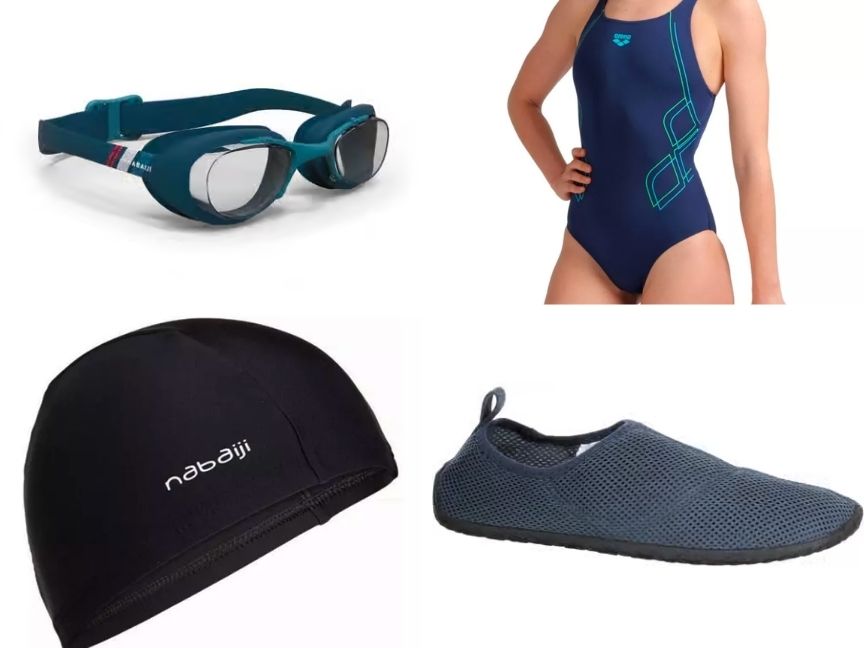
Cycling
Bike: You will need a bike suitable for road cycling or a triathlon bike. Ensure your bike is in good condition and has the correct position.
Helmet: It is mandatory in most triathlon competitions. Make sure it is certified and properly fitted.
Cycling clothes: A cycling suit or jersey and cycling shorts are helpful to improve aerodynamics and comfort.
Cycling shoes: Cycling-specific shoes with cleats will help you generate more pedaling power.
Water bottle: Keep it on your bike to maintain hydration.
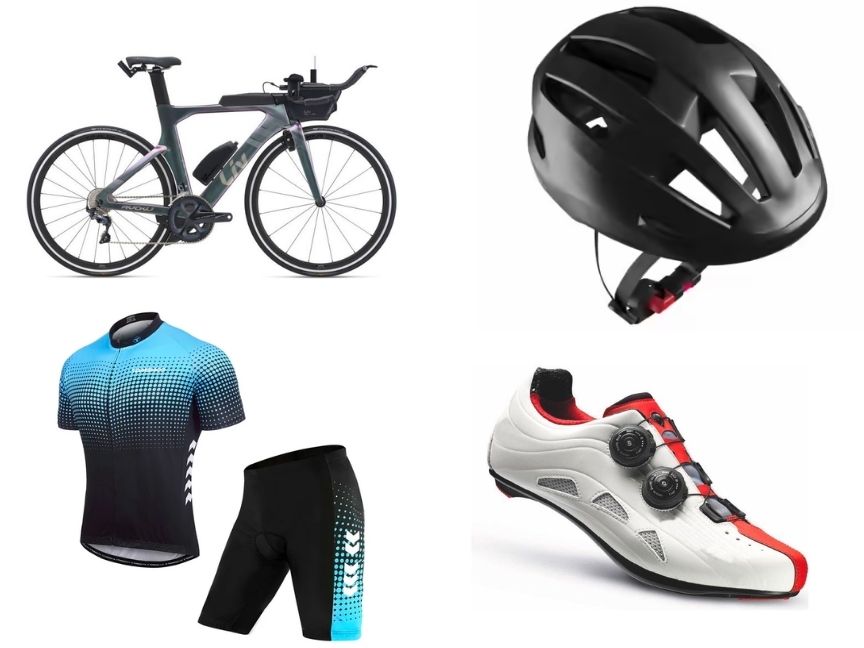
Footrace
Running shoes: A good pair is essential for this stage.
Running clothes: Wear comfortable, breathable clothing, such as running shirts and shorts.
Running belt: Some triathletes use a belt to carry energy gels or other accessories.
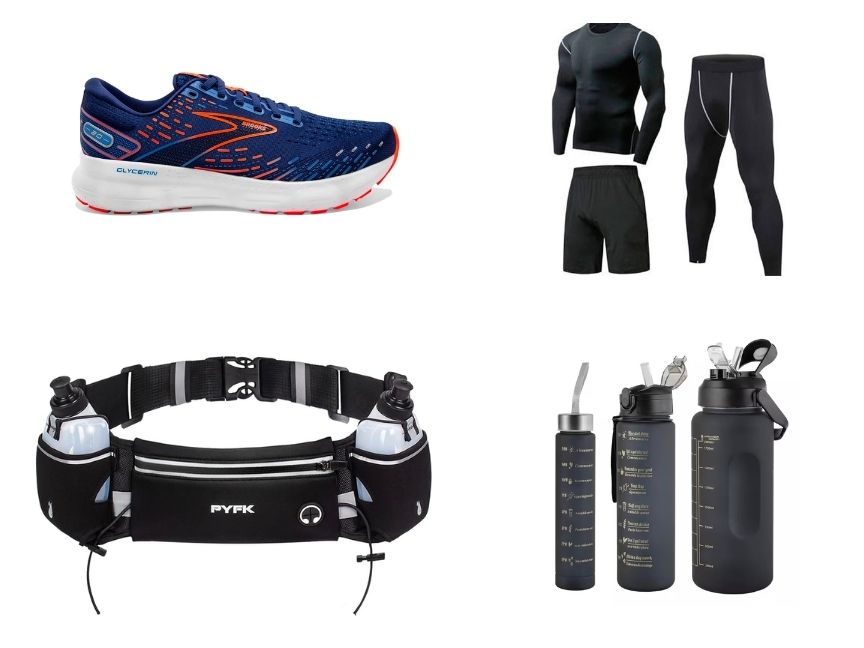
Other useful equipment
Sunglasses: These can be useful to protect your eyes from sunlight and wind during cycling and running.
Sports watch or stopwatch: A sports watch with a stopwatch will allow you to track your time and pace during the race.
Transition clothing: Some triathletes wear transition clothing, a garment worn over the swimsuit during the bike and run.
Safety equipment: includes lights and reflectors if the competition is in low-light conditions.
It is important to ensure that all your equipment is in good condition and that you have tested it in previous training sessions to ensure that it is comfortable and functional. Also, keep in mind that some triathletes may use additional equipment depending on their preferences and level of experience.
How do you train for a triathlon?
It requires specific physical and mental preparation, as it combines three disciplines. In general terms this can be your guide:
Set your goals: Whether it is to complete the distance, improve your time, or achieve a competitive level, setting them will help you structure your training effectively.
Plan your training: Create a training plan that includes swimming, cycling, and running sessions. The frequency and intensity of your workouts will depend on your current fitness level and the triathlon distance.
Divide your time: Distribute your training sessions among the three disciplines. For example, you can do a swimming session one day, cycling the next, and running on the third.
Core work: Keep improving your fundamental swimming, cycling, and running skills. Work on technique, endurance, and strength in each discipline.
Cross-training: It always helps to combine it with complementary activities such as yoga or strength training. This can help you prevent injuries and improve your overall performance.
Transitions: Practice transitions between disciplines to avoid any mishaps.
Nutrition: Learn about sports nutrition and how to fuel yourself before, during, and after training and competition.
Rest and recovery: Preventing injury and keeping your body healthy is critical. Include rest days in your plan and ensure you get enough sleep.
Race simulations: Conduct training sessions that simulate race conditions, including similar distances and paces.
Participate in practice events: In shorter triathlons or training events, get used to the racing atmosphere and learn to deal with the pressure.
Mindset: Develop strategies to overcome difficult moments during competition. Mental toughness is key in a triathlon.
Safety: If you train on roads or open water, use proper safety equipment and take precautions.
Ongoing evaluation: Conduct periodic progress evaluations to adjust your training plan as needed.
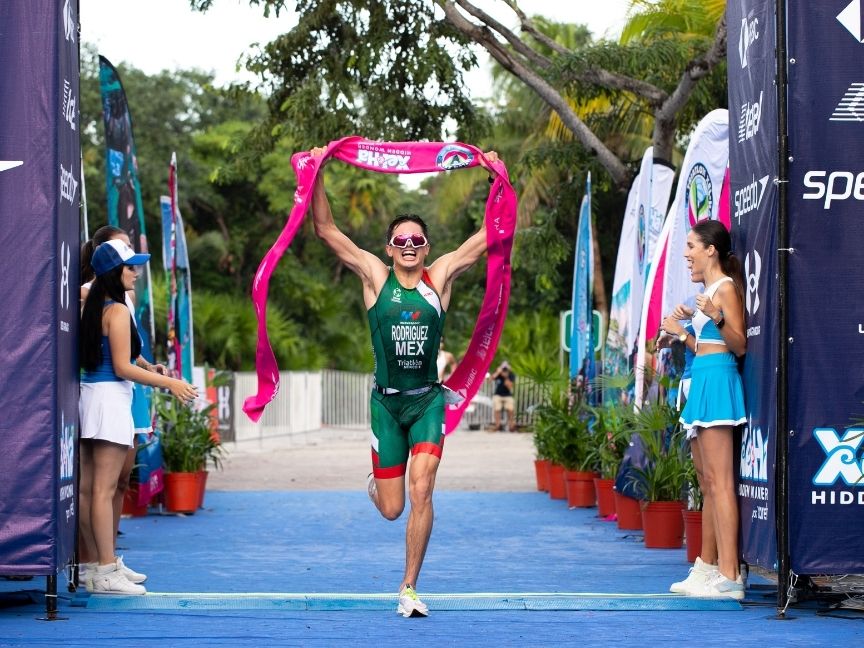
Listen to your body, and don't push yourself too hard, especially in the beginning. Training for a triathlon is a gradual and steady process.
I hope this information has served as a guide for you to get into this incredible and challenging sport. I even felt like starting to train for one.
See you in the next one?

Orgullosamente Cancunense, viajar es mi actividad favorita. Amante de los atardeceres, la pasta, el ...
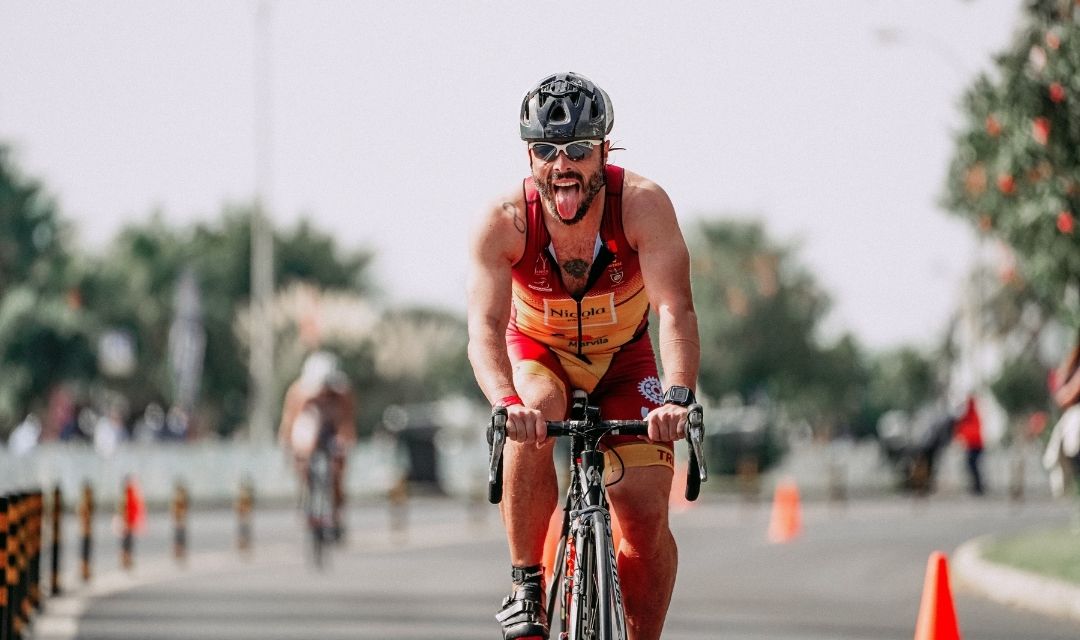
Posts Relacionados
Grupo Xcaret
Hotels


